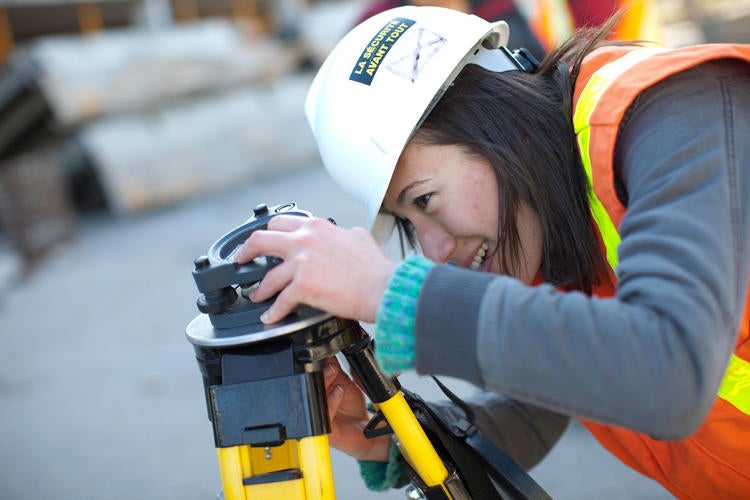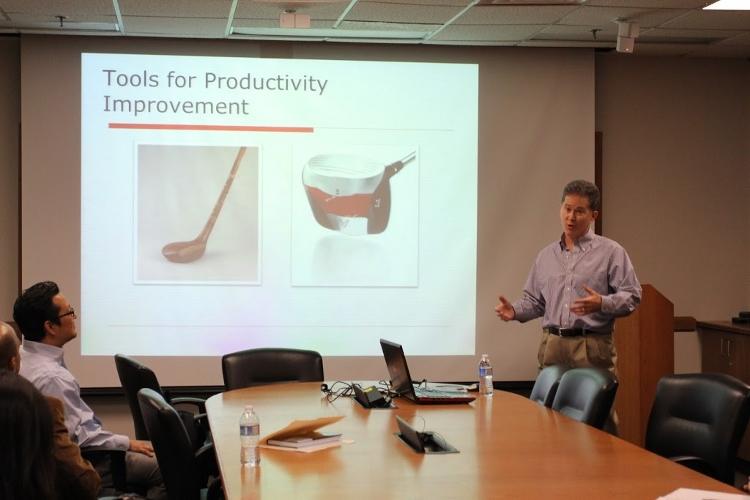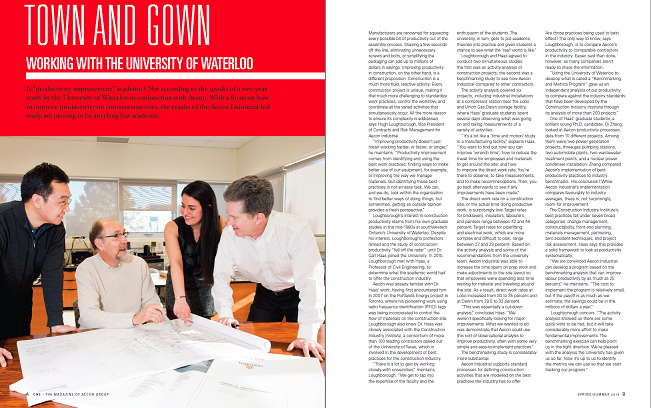Current Projects
Building on foundations in systems design and civil engineering, my research has grown to be multidisciplinary in nature with an emphasis on sustainability. It ranges from empirically based discovery to fundamental methods and processes that influence and improve practices. As a research catalyst, I collaborate with diverse colleagues and students toward achieving our shared vision in a way that equitably contributes to fundamental advancement of knowledge and impact. By accomplishing our vision and objectives, we contribute substantially to a better quality of life for all Canadians.
Infrastructure Computer Vision
This area of contributions has most recently culminated in a book published in November 2019 by Elsevier called “Infrastructure Computer Vision”. Several key elements of the book are based on related advances and current research including:
(1) 3D and 4D “scan-to-BIM” and “scan-vs-BIM” algorithms based on a-priori model information and 3D imaging were developed that contribute to the foundation for continuous and automated, 3D layout, progress tracking, and as-built modeling technologies
(2) geometric tolerance modeling and control algorithms for automated fabrication and construction operations based on combinations of kinematic relationship models, tolerance chains, selective assembly of modular components, Monte Carlo simulation, risk management, 3D scanning and 3D computer vision,
(3) algorithms for detecting cylindrical and planar objects in dense 3D point cloud scans of built facilities using orthogonal slicing with Hough transforms, bag-of-features and curvature based shape descriptors, 6D DBSCAN-based segmentation of building point clouds, shape driven RANSAC algorithms, and other methods, and
(4) 3D computer vision based, easily deployable systems for inspection, visualization, prefabrication and modular assembly of constructed facilities.
Supporters were NSERC, the Construction Industry Institute (CII), PCL, Aecon, SNC Lavalin, and OPG.
Construction Human-Robotic Systems
An extension of my state estimation research has led to an interdisciplinary research effort in human motion sensing, biomechanical analysis, and automated construction work systems research for improved construction worker health, safety and productivity funded by CCMPA, CMDC and NSERC. Advances have been made in identifying unsafe postures and motions for masons and iron workers using artificial intelligence algorithms, in identifying safer workspace layouts, and in innovations such as self-levelling pallets that augment human physical capabilities. Emerging outcomes include training systems that will work much like sports simulators and investigation of effectiveness of exoskeletons. Related, earlier-career, research, focused on materials tracking, weigh-in-motion, and full-scale field robotic systems. We thus contributed to technologies that are now broadly implemented, and which have improved productivity and safety substantially.
Capital Projects Process Analytics
Much of my activity has been focused on using data analytics, process mining, social networks analysis and diagnostic algorithms to understand the impacts of automated construction process management systems that integrate electronic documents and workflow engines to implement processes, database and document management systems, and cloud based computing networks to support fundamental capital project practices such as front end planning, workflow and document status detection, process mining and interoperability, interface management, change management and supply chain management. An example of practical impact is that our Interface Management Implementation Guide for mega-projects has been downloaded by hundreds of international construction industry users from the CII web site since June 2014. Supporters were NSERC, Valency, OPG, Coreworx and CII.
Construction Productivity
This multi-disciplinary research has resulted in empirically validated positive relationships between productivity and:
(1) best practices such as early project planning,
(2) degree of information technology integration,
(3) activity analysis methods, and
(4) best practices implementation indexes. Development of benchmarking and metric programs to aid in industry sector and national improvement were also contributed and validated. As well, new modeling and simulation methods have been developed including integration of joint-confidence-limits with Monte-Carlo based analysis of integrated risk registers and CPM schedules.
This was funded by NSERC, CII, CSC, and Aecon.
Circular Economy in the Built Environment
Our graduate students currently working in this research area are building on earlier research focused on reuse of construction materials, such as steel. For example, recent research has focused on developing methodologies for improving the net environmental impacts of new buildings through product recovery management. They employed advanced Building Information Modeling (BIM), Product Recovery Management (PRM), and Life Cycle Impact (LCI) technologies that support:
(1) an efficient single-target selective disassembly sequence planning method approach for buildings,
(2) an efficient approach for the selective deconstruction programming of buildings, and
(3) a multi-objective optimization analysis approach for selective disassembly planning of buildings.
Current students will be submitting several articles soon in related areas, such as:
(1) a regional economic input-output model of the impact of a move to adaptive reuse from new-build activity on employment and other economic activity, and
(2) approaches for adaptive reuse of degrading balconies in multi-residential buildings in our urban environments. Previous research focused on asset energy and life cycle management.
This research is supported by NSERC, MITACS, Diamond Schmitt Architects, and student scholarships.
Former Projects:
1) Automated 3-D Reconstruction using Laser Scanning and Photogrammatery
2) Augmenting the Capabilities of EPPM Systems
3) Construction Productivity Analysis
Below each of these three thrusts is described in detail.
Automated 3-D Reconstruction using Laser Scanning and Photogrammatery

The automated 3D reconstruction team works to make advances in construction project state estimating and real time 3D modeling via new sensing, data fusion and modeling methods. These tools will ultimately facilitate improved safety, effortless productivity tracking, real-time decision support, and advanced project knowledge management capabilities. In simple terms, they will help to get better information faster so constructors can make better decisions faster. This will improve productivity, quality and safety.
Augmenting the Capabilities of EPPM Systems
In a paradigm shift for business, project processes are increasingly being delivered remotely and linked via the internet, thus minimizing response time, mazimizing choice and creating a semantic temporal web of project data that can be exploited to automate processes, manage knowledge and assure project quality. Electronic Product and Process Modeling Systems are used in the construction industry to enable this shift. THere are four key research sub-thrusts being explored:
- Improving Supply Chain Nexus Management
- Identifying Risk through Interface Management
- Knowledge Discovery
- Automation of Change Management
Construction Productivity Analysis

This research thrust involves the sustainability of the human capital that underpins our infrastructure systems. A critical skilled construction labour shortage exists in Canada and in the US. To respond, we are developing strategies such as multi-skilling, more complete human resource management systems, and optimization for return on investment in training. The article linked to below (click on the image to read the full article) describes one such project in collaboration with an industry partner.

